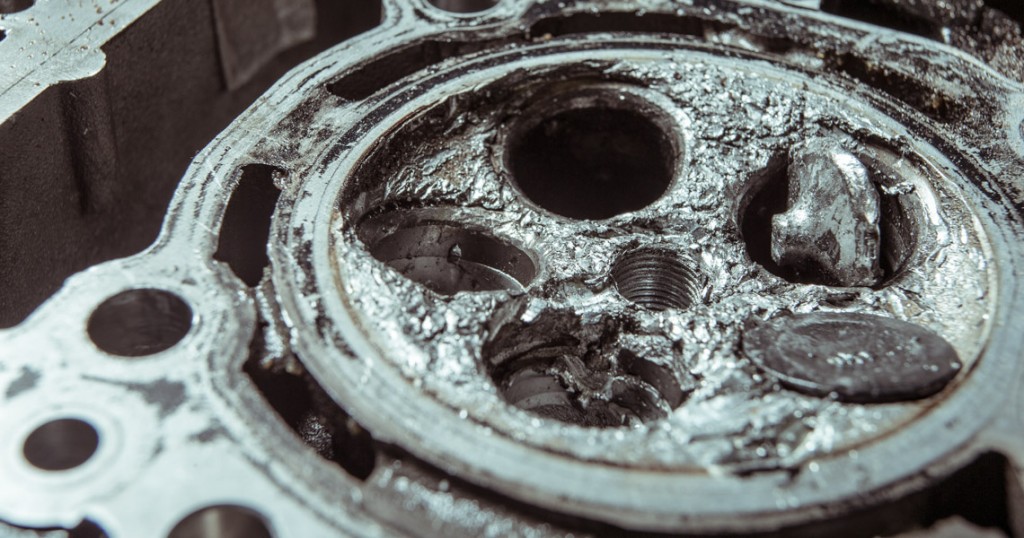
Your bike is broken, dead. stopped in its tracks. If you haven’t had it happen to you, well then you are lucky. Or maybe, just maybe, you are smarter than the inanimate mechanical object you depend on for fun or transportation. Over years of using, and in some cases abusing motorcycles, I’ve seen it all. So here is a little guide to keeping your machine running and avoiding some of the common mishaps I’ve either seen or experienced.
Four-Strokes Are Unreliable And Expensive To Fix Sure they are, that is why just about every car and truck on the road has a four-stroke and most farm and industrial equipment uses that type of motor. Maybe you were referring to your competition race bike motor then? Well, those happen to be extremely reliable for what they are, lightweight, high-horsepower engines that are run under crazy loads and hostile conditions. And they rarely break, you just hear about the few that do, and of course they were never abused in any way.
It’s not the engine type, its the use. When a four-stroke breaks it can often be attributed to a few common conditions, if you investigate. The number one killer of engines is over-revving. The stock rev limiter is set to preserve the valve train but just killing the spark isn’t enough to stop the violence that goes on when the things inside the motor are spun up that fast. The stretching, bending, flexing and floating that goes on when an engine is spinning at close to 15,000 RPM is enough on its own, but now you kill the combustion then re-light it a few strokes later, maybe the tire lands on the ground and adds even more impact right through the engine. Not even taking into consideration the downshifts that force the motor beyond the rev limiter sometimes. Then things start breaking, often catastrophically. It may not be during a high-rpm incident yet over time the adding up of multiple stresses will finally culminate in trouble. The tiny piston skirt is no match for the forces that would like it to go through the cylinder wall instead of sliding up and down inside of it. Light valve springs can’t shut the valve quick enough or conversely are strong enough to snap the lightweight valve in two in angst. And like any motor, dirt or debris getting past the air filter can be catastrophic.
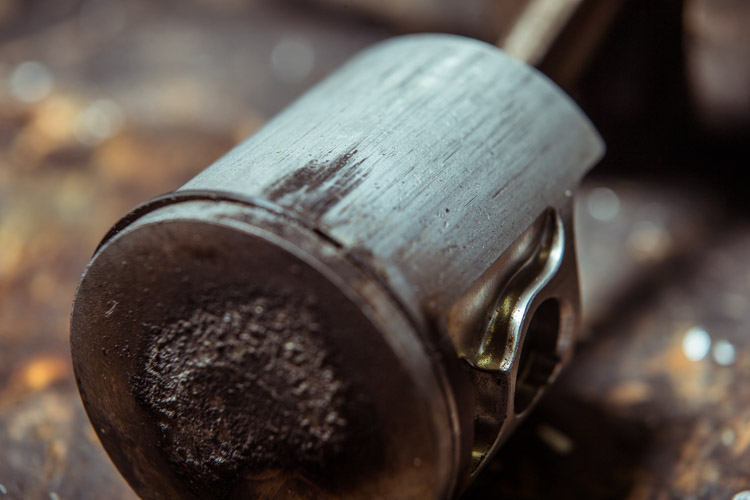
There are coatings on just about every part yet they can’t protect against dirt, sand or dust. Hard on the clutch? That same material that hooks the clutch plates together also wears our bearing and piston/cylinder surfaces when carried through the motor in the oil. Most of the engine’s heat comes from slipping the clutch, heating up just like metal on a grinding wheel. You get way more out of the current crop of stock four-strokes that you’d ever imagined or deserved–as you push the envelope you test the durability.
Keeping fresh oil, quality fuel and clean air running through the engine should yield way past the manufacturers recommendations for parts replacements. Rev it out, heat it up and run contaminants through it and you’ll see why the manual says to change the piston every 20-hours. And the expense comes from the amount of parts that often need to be replaced. That same oil that lubricates the bike can also carry debris to places that need to be slipping, not skidding. Things that wouldn’t normally be damaged now are. So learning to have a feel for your bike, or even an ear for problems can be your first line of defense. Carefully checking the oil filter to see if there is unusual particulates is a smart move. Understanding how your riding habits wear a machine and taking care of things before they go wrong takes time and keeping records.
It Was Working Perfect Then… Well, right after it was running perfect and just before it is doing whatever it is doing right now, what did you do to it? There is the answer. Did you wash the bike? Maybe put gas in it? Did your friend turn off the gas or maybe a tie down smashed the kill button wires? It is very uncommon for something to just “break” for no reason and if it did, blame something electrical, because very few can understand that stuff.
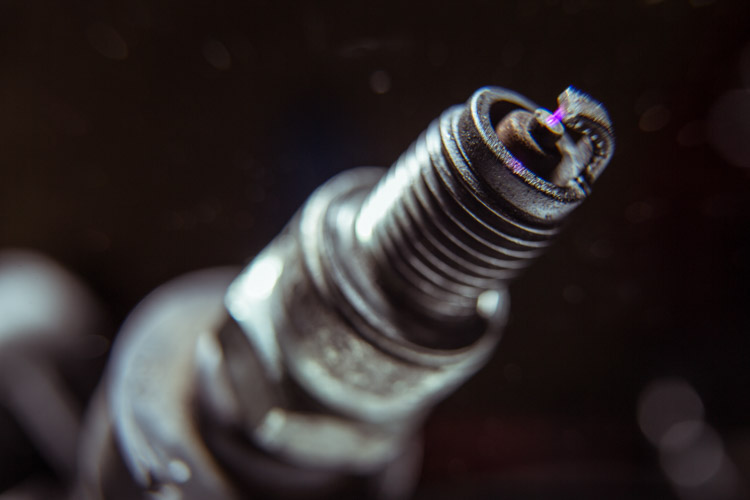
It Wont Start. Well this can be common. Often more common for some than others, but aren’t all of these scenarios. Starting takes three things, fuel, compression, spark. If you have all three, then the engine will at least fire once or a few times.
The first check, and an easy one provided you have a kick starter or an easy way to turn the motor over by hand is to see if there is good compression. If you are confused if there is good compression, just take the spark plug out (which will help in the next steps) and compare it to when the spark plug is in. Little or no compression means little or no power, simple as that. And sometimes on four-strokes, hard starting is the first sign of tight valves since when cold they often let air sneak past them.
Next is to check for fuel. Gas in the tank? Gas getting to the carb (or fuel injector)? Gas getting into the engine? If you are confused about this it is sometimes easy to use starting fluid or gasoline added through the intake tract or the spark plug hole to verify if the fuel is missing, as the bike will run on the added fuel. Followed by not running because the fuel is not getting to the motor the way is should. Plugged jets, clogged fuel filters, a vacuum condition in the tank, bad fuel pumps can all lead to a no-starting problem. Current gasoline with ethanol does not have the shelf life of non-ethanol gasoline and actually can grow an algae inside areas where fuel and air are present.
Spark is pretty easy to check for but sometimes elusive because you can’t really see the operation of the system. The electrical system can also be intermittent based on heat or vibration so diagnosing the actual problem can be tricky. One common symptom of an electrical problem is that it works when it is cold and does not when it gets hot. This isn’t a 100% certain thing but more common than not.
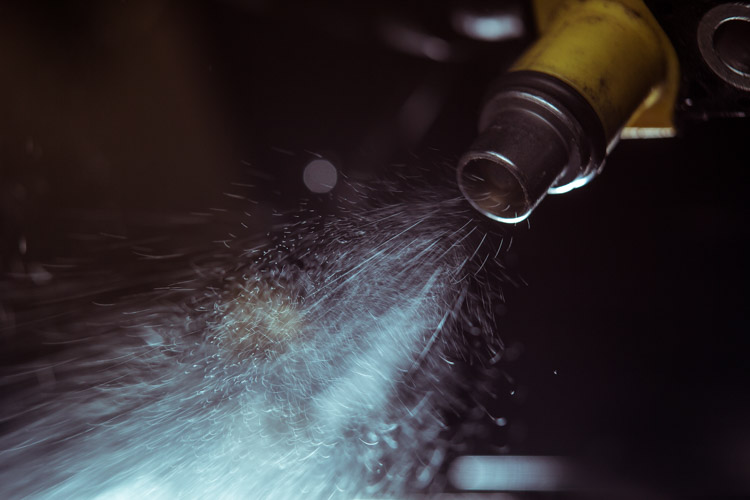
It just Stopped (And the bike is one of those newfangled fuel-injected things). For sure it has to be the fuel injection, right? Well, it is rare that the injector (or the fuel filtering) will just suddenly plug with little warning. Most of the time the bike will start experiencing a loss of power at big throttle openings first (since that is where a reduction in flow will show up first) then slowly be noticeable all the time. Along with a reduction in power will be a increase in backfiring (lean condition when off the throttle) and poor on no idle. If a FI bike dies suddenly, look to the pump. Actually it is easier to listen for it.
Replacing the in-line fuel filter is generally all that is needed since the screen in there is much smaller than the opening in the actual injector. Injectors are hard to clean and sometime take special tooling but there are garage methods that can get you going in a pinch. Remember, a lot of the FI system is electrical and that is tough to diagnose and even harder to fix, so a much better target of blame when the bike just stops.
It Just Stopped (And it is an old bike). Now it could be anything. If it made funny noises, your pretty much dealing with a worn out part that gave up the ghost. If it seemed to just suddenly quit running, as if you hit the kill button and held it, suspect electrical problems. You do know the kill button cuts off the spark, right? Kinda electrical? If it looses power, sort of like running out of gas? Yep, think fuel issues. Most of the time it is the simple things that cause the most common issues. Fouled or broken spark plugs happen. Kinked gas tank vent lines or even boiling gas can make bikes do funny things. I’ve had needles fall out of slides in the carb, wires come unplugged and wet air filters freeze in cold air. Strange things happen but you have to look at the situation and think about the most obvious stuff first.
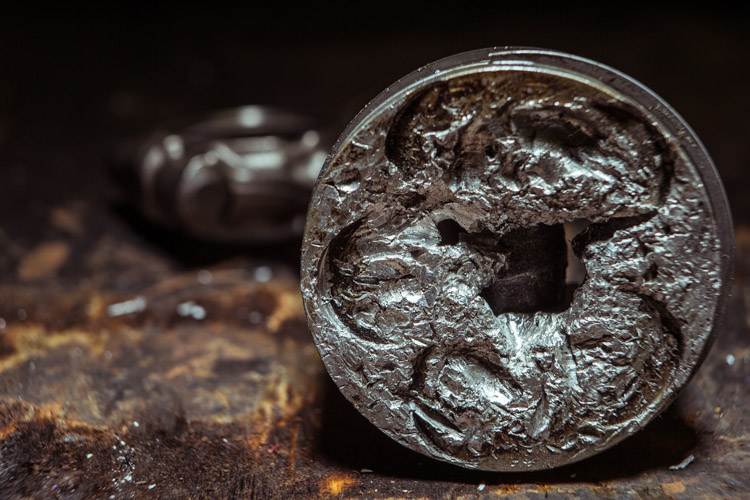
Yep, Its Broken! There are times when bad things happen. The fluke mechanical mishap. I’ve had spark plug tip break off and fall into a motor. Flywheels sheer off keyways. And a few things that were just well past their prime and break. Cranks, bearings, pistons. But there was usually a reason. The dirt that got past the filter on my two-stroke just meant the crank was going to go out. The time the four-stroke ran a little low on oil means the big end bearing or the cam bearing will have an issue sooner rather than later. On one bike I was riding the oil pump gear that was forced on when installing the side cover chipped a tooth finally chipped off more teeth a few hours later. I heard it and stopped riding the bike and fixed the problem by replacing the gear. Riding it more would have meant replacing the entire motor. I kept riding one bike with a rod knock till the rod finally welded itself together. I knew it and felt the bike getting slower but I also was taking it easy trying to nurse the bike home. Riding that knocking bike hard could have caused a catastrophic failure (where you get to see the insides of the motor without taking it apart) but I was lucky in the same way some riders are unlucky.
I really think that some people have a feel for mechanical things and the way they work. And I think it is a learned feeling. But that being said it is never too early to learn the easy stuff so you don’t sweat it as there will always be a big one waiting someplace down the road. Usually right after you miss the small one right in front of you.


7 Responses to “It Just Broke: Some Tips On How To Avoid Motorcycle Mechanical Mishaps”
ZipTyRacing
We race, build and maintain some of the finest race engines in the world. We understand that maintenance is the absolute key to reliability. Keep it clean inside/out and it will last a very long time. If you can put a wrench on it, check it, poor maintenance is the number one reason for failure. Use only high quality fuel, lubricants and components.
DirtHammers
Agree 100% with ZipTyRacing. Solid info.
ClanLoner
Great article. Everyone should read it, go ride, then read it again. Your bike talks to you. Are you listening?
Jay Benett (Jays Grow Journal)
My clutch on a 86 suzuki rm 80 wasnt working like it should. I tried to squeeze the clutch shaft actuator and I felt something let go. It also wasn’t returning back where it’s supposed to be. Any ideas would be greatly appreciated.
Jimmy Lewis
Is there spring tension on the actuator?
Jimmy Lewis
The cases can crack at actuator. The actuator can round off. It needs to be disassembled.
Jay Benett (Jays Grow Journal)
Thanks for the help everyone. I found the problem. It was the bolt that tightens the clutch lever at the case fell out somewhere. So when I flexed the lever it jumped teeth. I adjusted to where it was supposed to be. Seems to be fixed now. Thanks again!